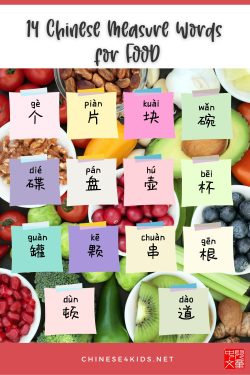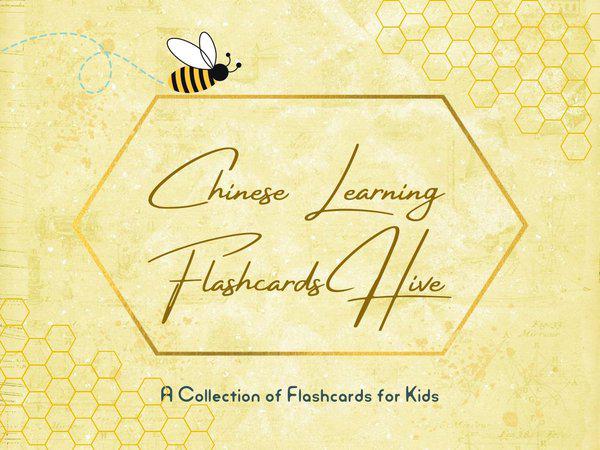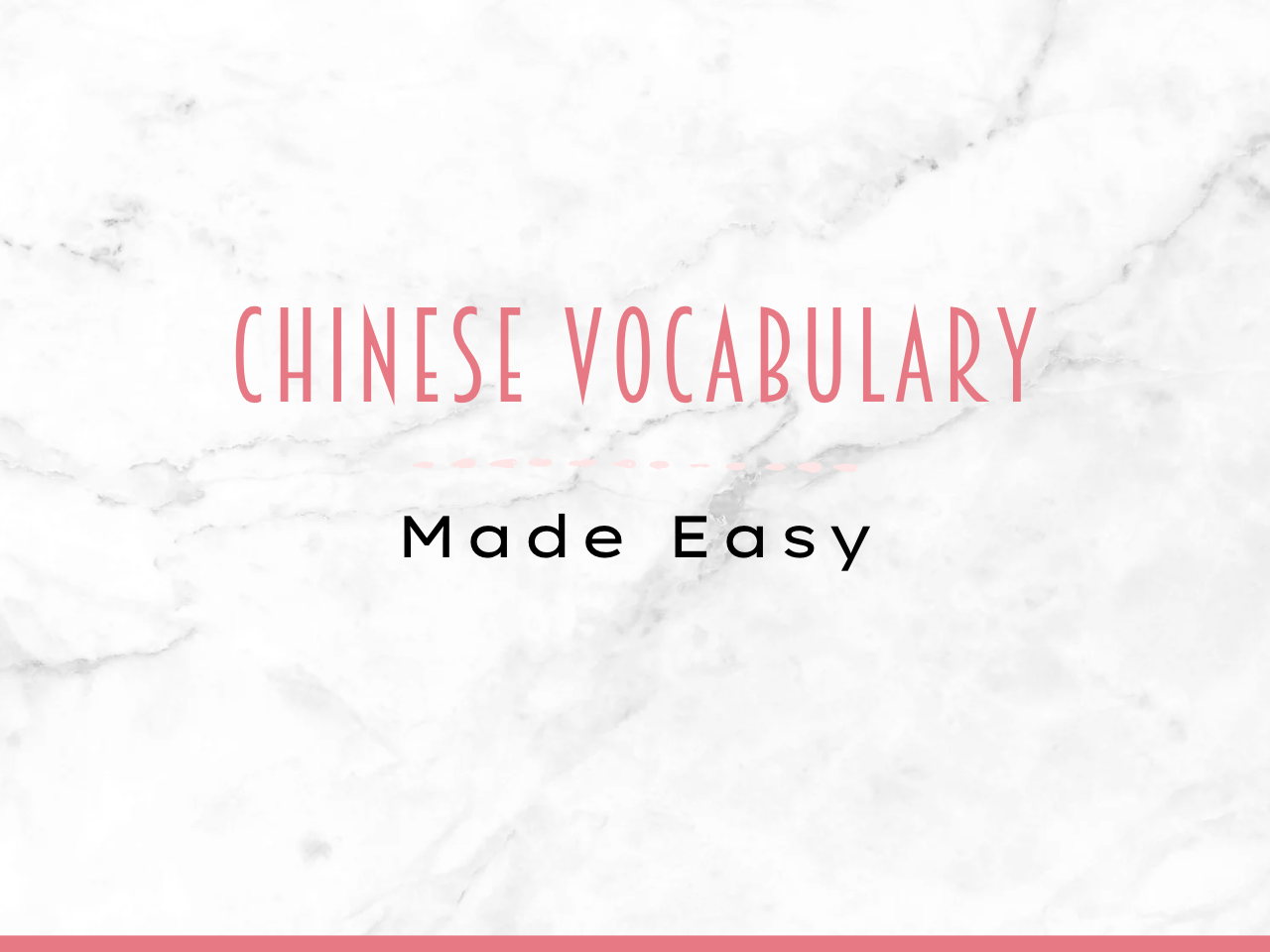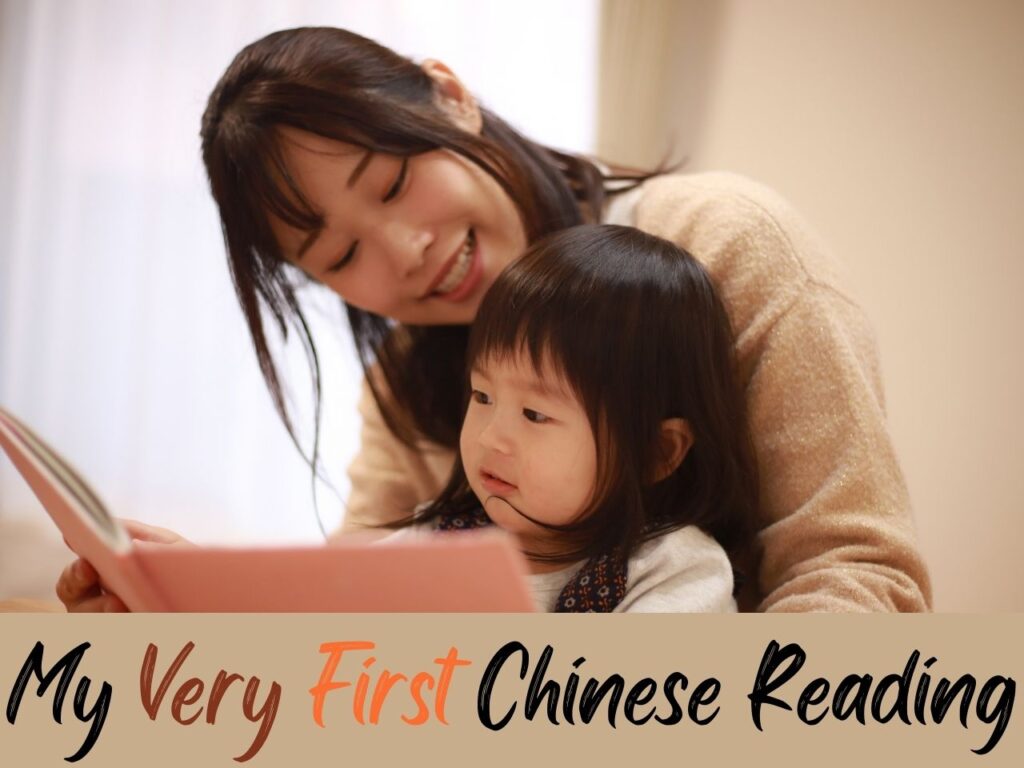
Exploring Chinese Measure Words for Food: A Delicious Linguistic Adventure

Chinese cuisine is renowned for its rich flavors, diverse dishes, and meticulous preparation. However, what many language learners may find intriguing and sometimes puzzling are the measure words used when discussing food. In the Chinese language, measure words are essential components of speech, and they play a crucial role in specifying the quantity of items.
Measure words, or “量词” (liàngcí) in Chinese, vary depending on the type of noun they accompany such as clothes, transportation, animals, and body parts… When it comes to food, there is a fascinating array of measure words used to describe different culinary delights. In this article, we will introduce you to some commonly used Chinese measure words for food, along with examples to help you navigate this linguistic aspect of Chinese culture.
Chinese Measure Words for Food
Here are some of the most common measure words for food in Mandarin Chinese
Measure Words for Food Served in A Meal
顿 (dùn)
顿 (dùn) is used to count meals, especially when referring to having breakfast, lunch, or dinner.
For example,
一顿饭 (yī dùn fàn) – One meal
两顿晚餐 (liǎng dùn wǎncān) – Two dinners
四顿宴会 (sì dùn yànhuì) – Four banquets
五顿野餐 (wǔ dùn yěcān) – Five picnics
道 (dào)
道 (dào) is a measure word that is used to count individual dishes or courses in a meal. It is often used to describe the number of distinct courses or dishes served, such as appetizers, main courses, or desserts.
For example,
一道菜 (yī dào cài) – One dish
两道主菜 (liǎng dào zhǔcài) – Two main dishes
三道甜点 (sān dào tiándiǎn) – Three desserts
四道小吃 (sì dào xiǎochī) – Four appetizers
Measure Words for Individual Food
个 (gè)
个 (gè) is one of the most versatile measure words in Chinese, suitable for a wide range of foods. It’s the go-to measure word when you’re not sure which one to use.
For example,
一个苹果 (yī gè píngguǒ) – One apple
三个冰淇淋 (sān gè chéngzi) – Three oranges
四个馒头 (sì gè mántou) – Four steamed buns
五个鸡蛋 (wǔ gè jīdàn) – Five eggs
六个三明治 (liù gè sānmíngzhì) – Six sandwiches
片 (piàn)
片 (piàn) is often used for flat and thin food items, such as pizza, pancakes, or slices of bread.
For example,
一片肉 (yī piàn ròu) – One slice of meat
两片面包 (liǎng piàn miànbāo) – Two slices of bread
四片西瓜 (sì piàn xīguā) – Four pieces of watermelon
块 (kuài)
块 (kuài) is versatile and can be used for various solid items like bread, cake, or tofu.
For example,
一块豆腐 (yīkuài dòufu) – ·One pieces of Tofu
两块牛肉 (liǎng kuài niúròu) – Two pieces of beef
四块蛋糕 (sì kuài dàngāo) – Four pieces of cake
四块巧克力 (sì kuài qiǎokèlì) – Four pieces of chocolate
根 (gēn)
根 (gēn) is commonly used for long, slender items, such as bananas, cucumbers, or carrots.
For example,
一根胡萝卜 (yī gēn húluóbo) – One carrot
两根香蕉 (liǎng gēn xiāngjiāo) – Two bananas
四根芦笋 (sì gēn lúsǔ) – Four asparagus spears
五根香肠 (wǔ gēn xiāngcháng) – Five sausages
串 (chuàn)
串 (chuàn) is used when referring to items that are skewered or threaded together, like kebabs.
For example,
一串羊肉串 (yī chuàn yángròu chuàn) – One skewer of lamb kebab
两串烤鱼串 (liǎng chuàn kǎoyú chuàn) – Two skewers of grilled fish
三串葡萄 (sān chuàn pútáo) – Three bunches of grapes
四串烤玉米 (sì chuàn kǎo yùmǐ) – Four skewers of grilled corn
五串烤蘑菇 (wǔ chuàn kǎo mógū) – Five skewers of grilled mushrooms
颗 (kē)
颗 (kē) is used for small, round food items like grapes, berries, or candies.
一颗草莓 (yī kē cǎoméi) – One strawberry
两颗橄榄 (liǎng kē gǎnlǎn) – Two olives
三颗糖 (sān kē táng) – Three candies
四颗蒜瓣 (sì kē suànbàn) – Four garlic cloves
五颗葡萄 (wǔ kē pútáo) – Five grapes
Measure Words for Food in A Container
碗 (wǎn)
碗 (wǎn) is a measure word primarily used for dishes that are served in bowls, like soups, stews, and noodle dishes
For example,
一碗面条 (yī wǎn miàntiáo) – One bowl of noodles
两碗汤 (liǎng wǎn tāng) – Two bowls of soup
三碗饭 (sān wǎn fàn) – Three bowls of rice
四碗豆腐 (sì wǎn dòufu) – Four bowls of tofu
五碗粥 (wǔ wǎn zhōu) – Five bowls of congee
碟 (dié)
碟 (dié) is typically used for small, plate-like dishes or appetizers often served in Chinese restaurants.
For example,
一碟小笼包 (yī dié xiǎolóngbāo) – One plate of soup dumplings
两碟炸鸡翅 (liǎng dié zhá jīchì) – Two plates of fried chicken wings
三碟凉菜 (sān dié liángcài) – Three plates of cold dishes
四碟点心 (sì dié diǎnxīn) – Four plates of dim sum
五碟小吃 (wǔ dié xiǎochī) – Five plates of appetizers
盘 (pán)
盘 (pán) is a measure word used for dishes and plates of food. It’s often used to quantify various types of dishes, both main courses and side dishes, served on plates or platters.
For example,
一盘炒饭 (yī pán chǎofàn) – One plate of fried rice
两盘炸鸡 (liǎng pán zhá jī) – Two plates of fried chicken
三盘蔬菜 (sān pán shūcài) – Three plates of vegetables
四盘寿司 (sì pán shòusī) – Four plates of sushi
五盘水果 (wǔ pán shuǐguǒ) – Five plates of fruits
壶 (hú)
壶 (hú) is a measure word specifically used for pots or containers of liquid. It’s commonly used for beverages such as tea, coffee, soup, and other liquids.
For example,
一壶茶 (yī hú chá) – One pot of tea
两壶咖啡 (liǎng hú kāfēi) – Two pots of coffee
四壶热水 (sì hú rèshuǐ) – Four pots of hot water
五壶酱油 (wǔ hú jiàngyóu) – Five pots of soy sauce
杯 (bēi)
杯 (bēi) is employed for liquids, making it perfect for counting cups of beverages like tea, coffee, or juice.
一杯咖啡 (yī bēi kāfēi) – One cup of coffee
两杯牛奶 (liǎng bēi niúnǎi) – Two glasses of milk
三杯果汁 (sān bēi guǒzhī) – Three glasses of fruit juice
四杯茶 (sì bēi chá) – Four cups of tea
五杯水 (wǔ bēi shuǐ) – Five glasses of water
瓶 (píng)
瓶 (píng) is commonly used for bottled or liquid items, such as water, wine, or soda.
For example,
一瓶葡萄酒 (yī píng pútáojiǔ) – One bottle of wine
两瓶可乐 (liǎng píng kělè) – Two bottles of beer
三瓶酱油 (sān píng jiàngyóu) – Three bottles of soy sauce
四瓶果汁 (sì píng guǒzhī) – Four bottles of juice
五瓶水 (wǔ píng shuǐ) – Five bottles of water
罐 (guàn)
罐 (guàn) is used for canned or tinned goods, such as canned fruits, vegetables, or beverages.
For example,
一罐啤酒 (yī guàn píjiǔ) – One can of beer
两罐番茄酱 (liǎng guàn fānqié jiàng) – Two cans of tomato sauce
三罐玉米 (sān guàn yùmǐ) – Three cans of corn
四罐蜂蜜 (sì guàn fēngmì) – Four cans of honey
五罐汽水 (wǔ guàn qìshuǐ) – Five cans of soda
These are some examples of the measure words used for food in Chinese. Remember that choosing the correct measure word can be quite specific and may depend on the shape, size, or characteristics of the food item you are describing.
Learn These Measure Words with Montessori Flashcards
We’ve also created Measure Words for Food Montessori Flashcards that allows learners to engage in hands-on, interactive learning that emphasizes recognition, matching, and recall.
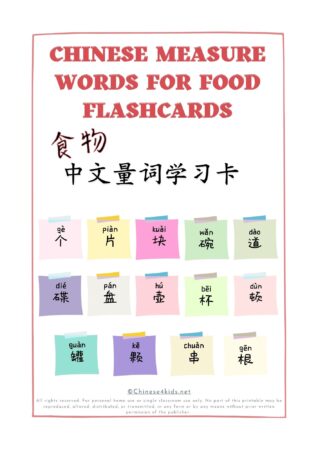
Learning these measure words will not only enhance your language skills but also provide insights into the cultural nuances of Chinese cuisine. So, the next time you sit down to enjoy a delicious Chinese meal, you can impress your friends and hosts by using the appropriate measure words for each dish. Happy learning and, most importantly, happy eating!
Want to Know More Measure Words?
-
- Chinese Measure Words for Body Parts
- Chinese Measure Words for Body Parts Montessori 3-Part Flashcards
- Chinese Measure Words for Animals That Kids Need to Know
- Chinese Measure Words for Transportation Montessori 3-Part Flashcards
- Bike, Bus, Car… Transports in Chinese
- Mastering Chinese Measure Words for Clothing: From Shirts to Scarves and Everything in Between
- Chinese Measure Words for Clothes Montessori 3-Part Flashcards
- 6 Essential Measure Words for Transportation Vehicles in Chinese
- 14 Chinese Measure Words for Food
- Chinese Measure Words for Food Montessori 3-Part Flashcards
- Chinese Measure Words for Tableware
- Chinese Measure Words for Tableware Montessori 3-Part Flashcards
- Chinese Measure Words for Common Household Items
- Chinese Measure Words for Household Items Montessori 3-Part Flashcards
- Chinese Measure Words for Buildings
- Chinese Measure Words for Buildings Montessori 3-Part Flashcard

You May Also Be Interested:
- Chinese4kids Membership – a portal for busy Chinese teachers and parents
- Chinese learning flashcards Hive – a flashcards library that with regular additions of new quality Chinese learning flashcards
- Chinese learning worksheets collection – Also a part of Chinese4kids membership, this collection is for teachers and parents who want to have access to engaging worksheets and activity sheets created for kids learning Mandarin Chinese as an additional language
- Speak Chinese with Kids Course
- Chinese Vocabulary Made Easy Course
Recent Posts
Join Our Membership
Enroll to A Course
Buy An eBOOK
Our Posts
